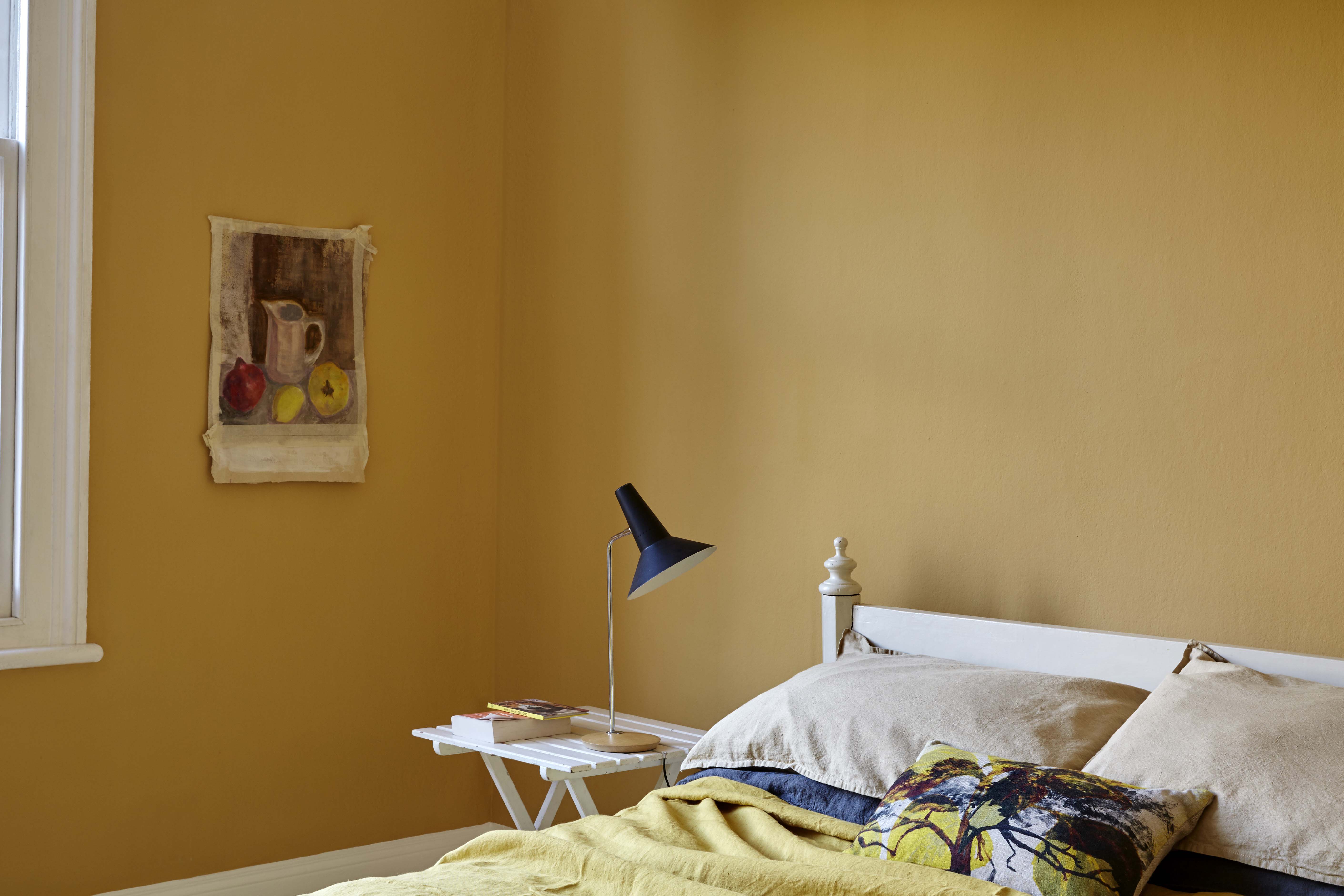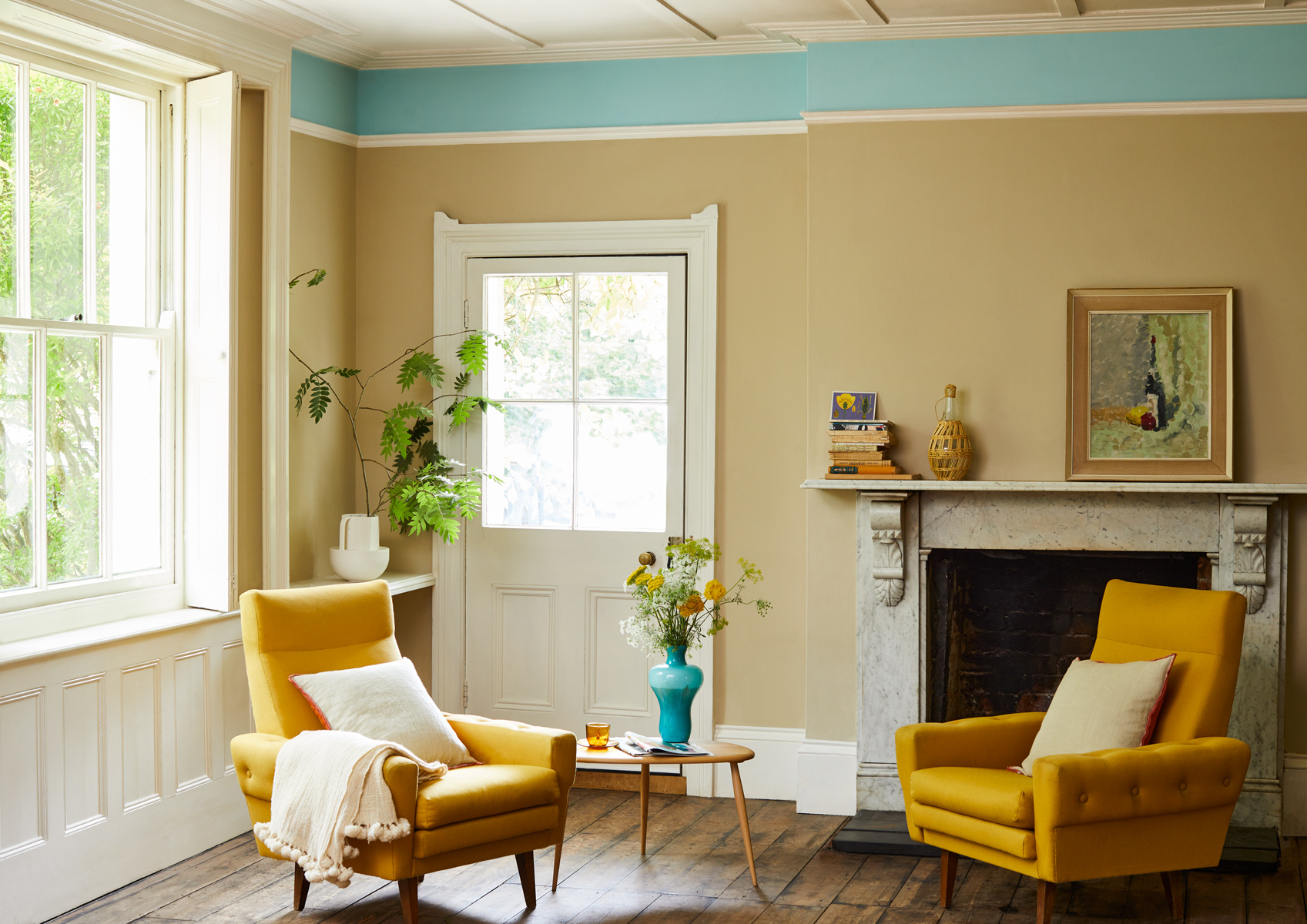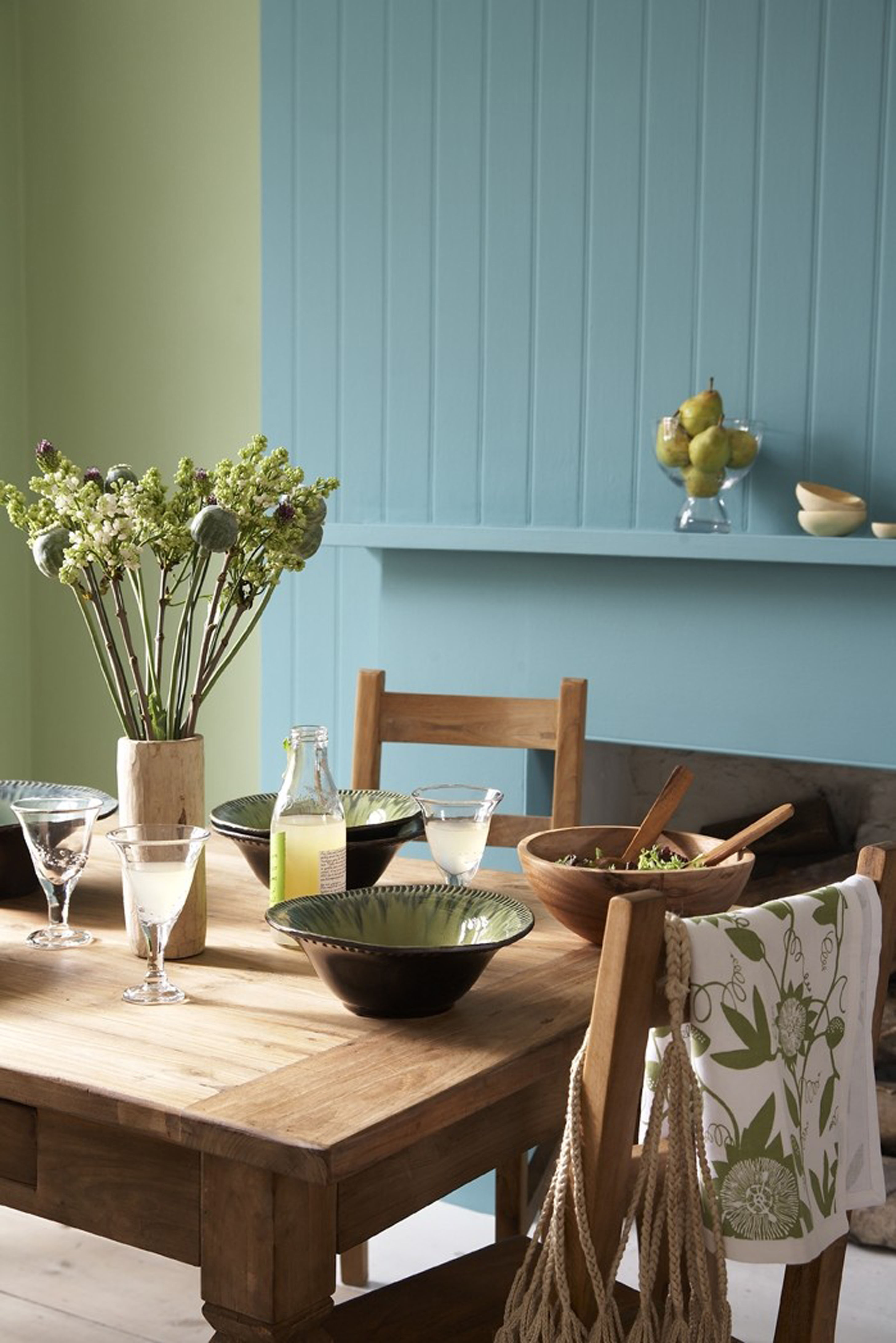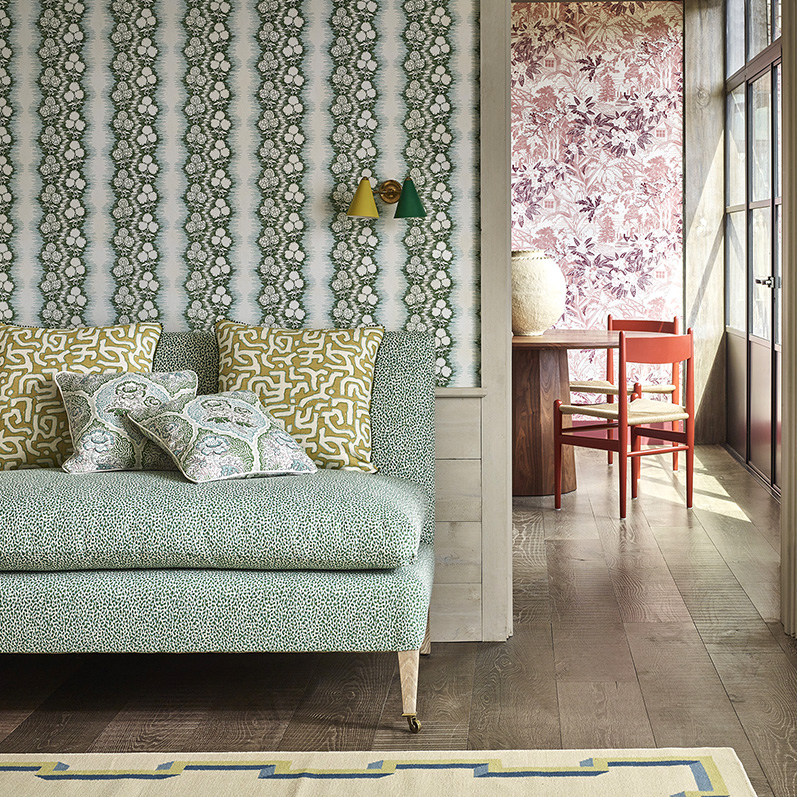Eco-friendly design tips
From fabric to furniture, check out these home décor ideas to make your home a little greener
Buy pre-loved furniture

Image supplied by Earthborn Paints
Recycled furniture has obvious eco-credentials. But buying second hand not only saves on the embodied CO2 of new items but can add character to your home. Ebay and Gumtree aside, there are countless online emporiums to browse offering everything from rustic farmhouse to vintage antique and retro chic. Auction houses and car boot sales can also be treasure-troves of bargains. If you are replacing your kitchen, The Used Kitchen Company offers showroom and second-hand designer kitchens with as much as 70% of the retail price.
Sustainable and reclaimed wood
New wooden flooring and furniture requires cutting down living trees that may take decades to regrow. Reclaimed lumber is a more sustainable option for hardwood flooring, decks, wall panelling, tables, cabinet shelves and more. To make sure lumber is really reclaimed, only buy it from a trustworthy dealer with certifications from organisations, such as the Forestry Stewardship Council (FSC) or the Rainforest Alliance. Reclaimed wood can be more expensive than virgin wood as there is a lot of nail-pulling and extra work involved but you will be doing your bit to save the planet.
Avoid carpets
 Image supplied by Earthborn Paints
Image supplied by Earthborn Paints
Engineered reclaimed wood floor is more eco-friendly than synthetic carpeting. While warm and cosy underfoot, most carpets are made from synthetic fibre, sourced from non-renewable, petrochemicals. That distinctive new carpet smell is the result of chemicals “off-gassing”. Plus, synthetic fibres aren’t biodegradable. Old carpet can take hundreds of years to break down in landfill.
On a more positive note, synthetic rugs made from recycled materials, such as plastic bottles, are now available. Suppliers include Weaver Green. Each machine washable rug and runner is made from up to 3,000 recycled plastic bottles, says the innovative company. Prices start at £45 per rug (prices correct November 2022)
Other sustainable options to enhance your home comfort are carpets and rugs made from natural materials, such as sheep’s wool, sisal, jute and seagrass.
Choose low VOC paints
 Image supplied by Earthborn Paints
Image supplied by Earthborn Paints
A lick of new paint is among the easiest ways of giving a room a revamp. Water-based paints are a greener choice than oil or solvent-based, vinyl and acrylic products made from petrochemicals, heavy metals and formaldehyde. While all household paint must now contain a minimal amount of potentially harmful VOCs (volatile organic compounds), water-based paints have much lower levels than traditional solvent-based products.
When shopping for paint, look for tins labelled low VOC. The VOC content must now be listed on the tin by law. Eco-paints don’t come cheap but are available in a vast range of beautiful shades and are nicer to use as they are low odour. Suppliers include Earthborn Paints, Lakeland Paints, Little Green and Farrow and Ball.
LED lighting
Switching from incandescent bulbs to energy efficient LED lights is another small but key step to a greener home. LED lights convert 95% of their energy into light with only 5% is wasted as heat. This means LEDs use a tiny amount of electricity compared to incandescent bulbs or fluorescent lights, so are a more sustainable form of lighting, Artificial lighting accounts for around 15% of the average household energy bill, so LED lights are not only better for the earth but your wallet, too.
Choose beeswax candles
Scented candles not only make everything smell nicer but provide a warm and comforting ambience. However, be careful about the candles you buy if you want to be as kind to the planet as possible. Many cheaper candles are made from petroleum-based paraffin wax and release the same VOCs as regular paints. So, look for candles made from natural wax, such as beeswax, coconut or soy, that are from a sustainable source and non-toxic. Suppliers include the Yorkshire Beeswax Candle Company. The family-run business makes a variety of handmade bees wax products from waste wax and natural raw honey, all sourced locally. Prices start at around £7.50 for a pure beeswax pillar candle (prices correct November 2022). Check out their website for great gift ideas.
Add plants

Image supplied by Earthborn Paints
A simple and stylish way to boost your home’s green credentials is to fill it with plants. Indoor plants are not only attractive but create a calming atmosphere. Houseplants also convert carbon dioxide into fresh oxygen, so they they help to purify the air. Some can also absorb toxins from the air, including Sanseveria (snake plant) which is excellent for filtering out formaldehyde.
Contemporary homes typically feature open plan interiors with lots of light, so you can use larger and most striking plants to create impact. Think elegant palms, fiddle leaf fig and broad-leafed tropical rubber plants. In smaller rooms, orchids, ferns and African violets work well. Finding the right container can be as important as sourcing the plants. Woven baskets, antique urns and painted clay pots are attractive. Avoid plastic.
Wallpaper and fabric can be eco-friendly too

Image supplied by Rapture and Wright
Check out Weaver Green for beautiful cushions, blankets and a new collation of French linen inspired textiles. Despite being made entirely from recycled plastic bottles, the fabric offers the comfort and softness of wool and cotton, says the company. Weaver Green estimate making textiles from recycled plastic bottles uses up to 70% less energy and nearly 90% less water than creating them from scratch. Non-toxic dyes are used to transform the yarn into a rainbow of colours.
For sustainably produced textiles made from natural materials, try Rapture and Wright. The raw ingredient is flax, a hardy plant that, unlike cotton, requires few pesticides or fertilizers and little irrigation to grow. Environmental sustainability has been at the core of every decision since the start in 2004, say the founders. The aim was to develop a low-impact, in-house production studio for hand-printing beautiful fabrics and wallpaper. Newly installed solar panels mean the company can be off grid for 10 months of the year.
What is eco-friendly design?
Eco-friendly or sustainable interior design aims to make your home a little greener. It may mean spending more on natural materials that don’t harm the planet rather than mainstream, synthetic ones. For example, eco-paints or 100% wool carpets. But eco-friendly design can also mean choosing upcycled, recycled or repurposed furniture and fabric rather than buying new which are kinder to the planet and your bank balance.
